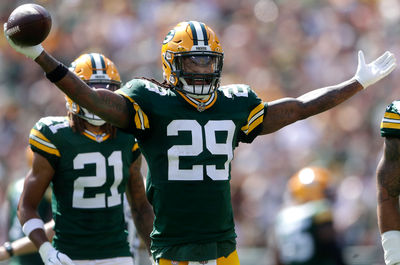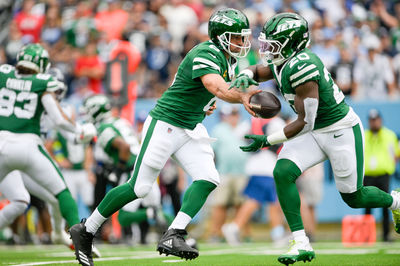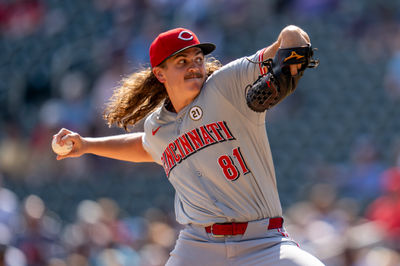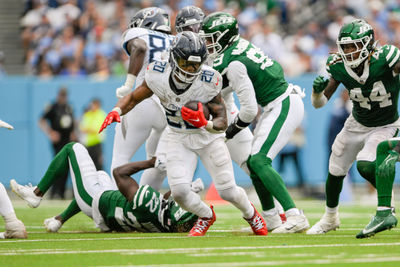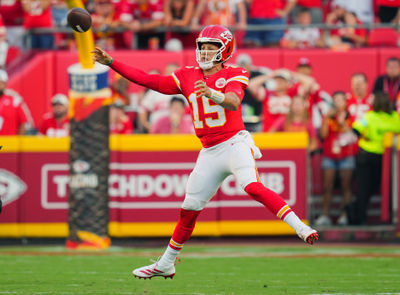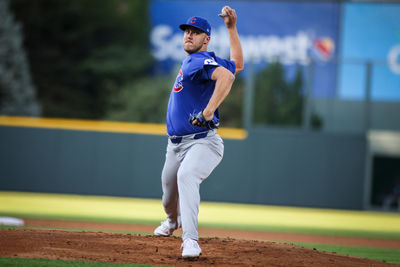Fantasy Football Backup Running Backs: Is Production or Potential More Important? Austin Ekeler, Jordan Mason, Jaylen Warren and More
Comparing running backs who give mild production in a backup role to those who aren't involved but would step into a major role if an injury occurred.
I never really liked the idea of the handcuff in fantasy football. I guess I understand it if you are only getting a few running backs and counting on them heavily, but I prefer to load up on useful fantasy backs to mix-and-match. If a guy gets hurt, there are others to take his place.
Not every backup running back is created the same, however. His skill matters, yes, but the way he is used matters even more. Some guys split the work or at least take a portion of the handoffs and work on passing downs, catching the ball more often.
Those are good flex options who can be considered on the right weeks against the right opponents. The ceiling on those guys is usually pretty low, though, unless an injury thrusts them into full-time work.
Injuries are impossible to predict, but planning for the eventuality that one does happen can help fantasy owners decide who is best for their bench spots and which moves would be prudent in case of an emergency injury. The potential situation a backup running back would step into if the starter got hurt matters for his fantasy value, even if that scenario never happens during the season.
I began thinking about which players are more valuable: those who are currently producing at middling levels or those who aren’t producing now but could become high-level options with an injury. There are arguments to make for both sides, and a lot comes down to the individuals in question.
Let’s look at some the pros and cons of getting/expecting fantasy value with low-level players and if either method is more likely to produce a winning team. I want to start with a concept I remember learning about in 10th grade, or so, that can be applied to fantasy football.
Potential Fantasy Value vs. Kinetic Fantasy Value
I’m reaching back to high school physics with this one: Kinetic energy is the active energy that an object possesses. A moving ball is a good example. Potential energy is the amount of energy that could be exerted; imagine holding a swing back with someone sitting on it, knowing that they will begin swinging back and forth if you let go.
Fantasy value can be seen the same way. Austin Ekeler has received about one-third of the carries that Brian Robinson has in Washington, but Ekeler is tied for the team lead in receptions; he’s had a role in the offense. Ekeler has kinetic, active fantasy value.
Buffalo Bills running back Ray Davis is a name I’ve seen as a player who would step into a great situation if the player in front of him were to suffer an injury. Davis has just 12 carries for 42 yards through two weeks and isn’t currently a fantasy option in any league.
If James Cook were to suffer an injury, though, then Davis would assume a high-value role next to Josh Allen. Davis has potential fantasy value as high as nearly any back in football.
Potential energy transfers to kinetic energy the same way an injury takes a guy from potentially being a fantasy star to actually producing like one. San Francisco’s Jordan Mason is the perfect example: he would have essentially no fantasy value if Christian McCaffrey were healthy, but he’s a must-start fantasy player with the star back on IR.
Which is More Important?
The potential of the backup San Francisco running back job is worth more than the actual value of Miles Sanders in Carolina’s backup running back role. Though Sanders gets more touches each week than San Fran’s Isaac Guerendo, Guerendo is one hit away from stepping into major touches on maybe the best running game in the league.
Jaylen Warren is the clear backup behind Najee Harris, but he still gets valuable carries and has a history of success. Having a flex option like Warren on your roster is more valuable than the potential value of someone like Guerendo.
Every situation is different, and fantasy owners are tasked with deciding which is more important (current value or potential value) between individual players. Injuries are usually going to decide which direction is right to pursue, making it impossible to know if your decision will be right until it’s too late.
We’re talking about low-level fantasy players either way. A lot of these guys won’t even be rostered in shallower leagues, and those who are on a team are roster-churn players who are bench guys most weeks.
Conclusion
There is no catch-all answer to whether it’s better to have a part-time player or a bench guy who could possibly step into high-level work. Every situation is different, as some guys get higher value touches and others are more valuable in a certain format (PPR vs. standard).
Luck plays a big part in everything in fantasy football, and this is no different. Owners can only make the best decisions for their roster and hope for the best. When it comes to the bottom of your squad, the construction of your roster is important.
If you have several star backs who won’t sit often, the high-potential backup has more value (this is where the handcuff method plays in). For a team with more depth, though, and an owner looking to play matchups, a guy like Ekeler is more valuable because he might play some weeks, providing value that wouldn’t be there with entrenched fantasy starters.
Each owner must decide how they want to build their team. Do what makes the most sense in how you want to manage your team. That’s a vague statement and could be taken a lot of ways, and that’s the beauty of fantasy football: there are a seemingly infinite number of ways to create a team, and everyone gets the freedom to do it how they please.
Decide the value you see in players and stick to your goals rather than chasing some ideal of the “perfect” fantasy roster. Backup running backs are lottery tickets; pick your lucky numbers, then treat them as losers until you scratch off and see the jackpot.
#2024-fantasy-football
































